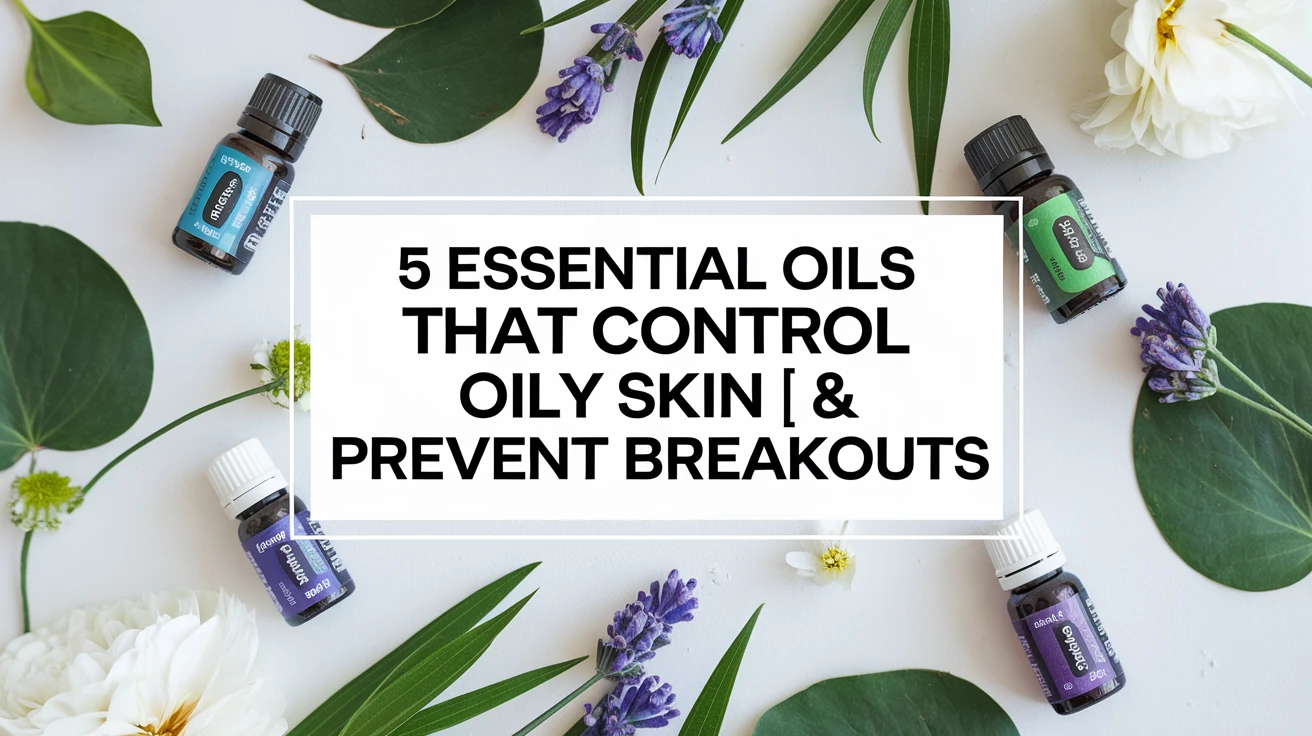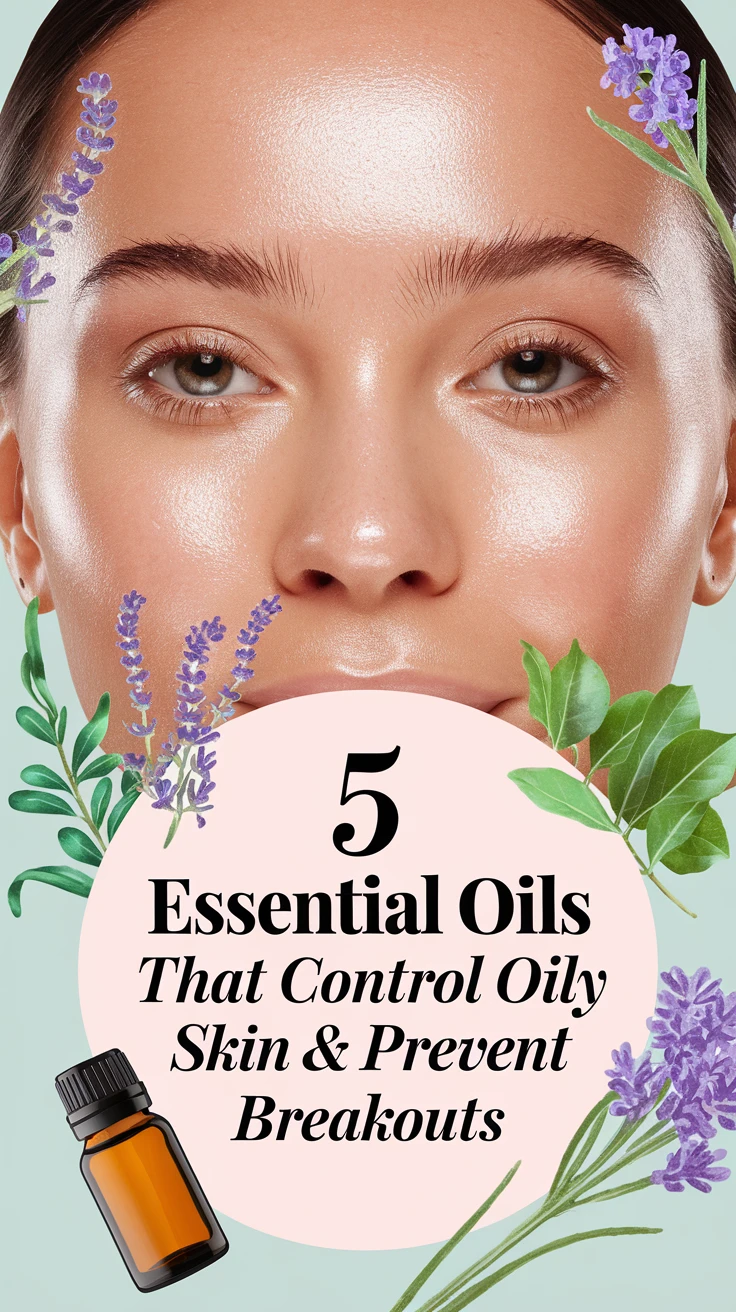
Introduction to Essential Oils for Oily Skin
If you’re struggling with oily skin, you’re not alone. The constant battle against shine, clogged pores, and breakouts can be frustrating. But nature has provided some powerful allies in the form of essential oils for oily skin. These concentrated plant extracts can help regulate sebum production, fight bacteria, and restore your skin’s natural balance.
Before we dive into the specific oils that can transform your skincare routine, it’s important to understand why these natural solutions work so effectively. Essential oils contain compounds that can:
- Balance sebum production
- Fight acne-causing bacteria
- Reduce inflammation
- Minimize the appearance of large pores
- Provide gentle exfoliation
1. Tea Tree Oil: The Powerful Antibacterial Champion
Tea tree oil stands at the forefront of essential oils for oily skin, thanks to its remarkable antibacterial and anti-inflammatory properties. This Australian native has been used for centuries in traditional medicine and has strong scientific backing for its effectiveness in treating oily and acne-prone skin.
- Contains powerful antimicrobial compounds
- Helps regulate oil production
- Unclogs pores effectively
- Reduces inflammation and redness
- Works quickly on active breakouts
To use tea tree oil effectively, always dilute it with a carrier oil like jojoba or grapeseed oil. Start with a 2% dilution (12 drops per ounce of carrier oil) and adjust based on your skin’s response. Apply the mixture to cleansed skin using gentle, upward strokes.
Pro tip: Create a spot treatment by mixing one drop of tea tree oil with three drops of witch hazel for quick action on emerging blemishes.
2. Lavender Oil: The Gentle Balancer
Lavender oil is nature’s skin balancer, offering a gentle yet effective approach to managing oily skin. What makes it particularly special is its ability to regulate sebum production while simultaneously calming inflammation and reducing stress-related breakouts.
- Balances skin’s natural oil production
- Reduces stress-related breakouts
- Promotes cellular regeneration
- Soothes irritated skin
- Has natural antiseptic properties
For best results, combine lavender oil with a light carrier oil like sweet almond or grapeseed. Use a 3% dilution (18 drops per ounce of carrier oil) for daily use. This oil is gentle enough to be used both morning and night.
Pro tip: Add 2-3 drops of lavender oil to your regular clay mask for enhanced oil-controlling benefits.
3. Patchouli Oil: The Deep Pore Cleanser
Patchouli oil might be known for its distinct fragrance, but its benefits for oily skin are truly remarkable. This essential oil excels at deep pore cleansing while helping to regenerate skin cells and reduce the appearance of enlarged pores.
- Deeply cleanses pores
- Reduces appearance of large pores
- Promotes cell regeneration
- Has natural astringent properties
- Helps fade acne scars
Mix patchouli oil with jojoba oil at a 2% dilution (12 drops per ounce). Apply the mixture as part of your evening skincare routine, focusing on areas with enlarged pores or excessive oil production.
Pro tip: Create a weekly treatment by adding 4 drops of patchouli oil to 2 tablespoons of honey for a purifying mask.
4. Ylang Ylang Oil: The Sebum Regulator
Don’t let its sweet floral scent fool you – ylang ylang oil is a powerful ally in the fight against oily skin. This tropical flower extract helps normalize sebum production while providing antimicrobial benefits that help prevent breakouts.
- Regulates sebum production
- Balances skin pH
- Provides antimicrobial protection
- Reduces inflammation
- Improves skin texture
Combine ylang ylang oil with a light carrier oil at a 2% dilution. Apply the mixture in the evening, as this oil can make skin slightly photosensitive. Focus application on areas that tend to become especially oily.
Pro tip: Mix 2 drops of ylang ylang with 2 drops of lavender in your nighttime moisturizer for enhanced oil-balancing effects.
5. Bergamot Oil: The Clarifying Citrus
Bergamot oil is the unsung hero among essential oils for oily skin. This citrus oil not only helps control excess oil but also brightens the complexion and reduces the appearance of acne scars.
- Natural astringent properties
- Helps lighten acne marks
- Reduces excess oil production
- Provides antibacterial benefits
- Improves skin tone and texture
Use bergamot oil in evening skincare only, as it can cause photosensitivity. Dilute at 2% with a carrier oil and apply to cleansed skin, avoiding direct sun exposure for 12 hours after use.
Pro tip: Create an overnight spot treatment by mixing one drop of bergamot with three drops of tea tree oil and five drops of jojoba oil.
Key Takeaways
- Always dilute essential oils properly before applying to skin
- Perform a patch test before full application
- Be consistent with application for best results
- Use photosensitive oils (bergamot, citrus) at night only
- Consider combining oils for enhanced benefits
Conclusion
Managing oily skin doesn’t have to be a constant struggle. These five essential oils for oily skin offer natural, effective solutions for controlling excess sebum and preventing breakouts. Remember to start slowly, dilute properly, and listen to your skin’s needs. With consistent use and proper application, you can achieve the balanced, clear complexion you’ve been seeking.
Frequently Asked Questions
How often should I use essential oils on oily skin?
Start with once daily application and gradually increase to twice daily if your skin responds well. Always monitor your skin’s reaction and adjust accordingly.
Can essential oils make my skin more oily?
When used properly, essential oils should help balance oil production. If you notice increased oiliness, you may be using too much or the wrong carrier oil.
What’s the best carrier oil for oily skin?
Light, non-comedogenic oils like jojoba, grapeseed, or hemp seed oil work best for oily skin types.
Are essential oils safe for acne-prone skin?
Yes, when properly diluted and used consistently. Always perform a patch test first and start with lower concentrations.
Can I mix different essential oils together?
Yes, you can create blends, but ensure the total dilution ratio remains appropriate (usually 2-3% total essential oils in your carrier oil).

